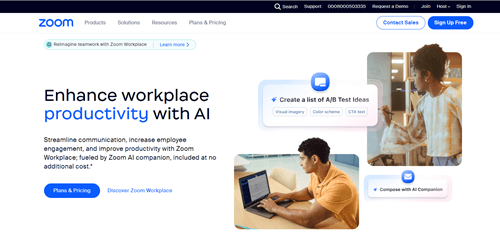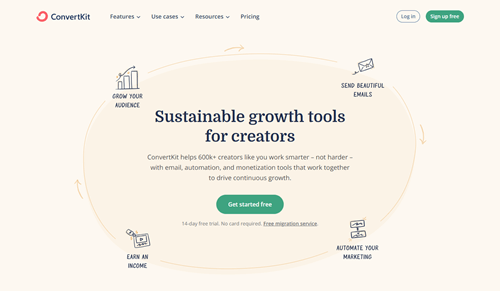
SaaS Growth Hacking Strategies: Unleashing Exponential Growth
In the fiercely competitive SaaS landscape, growth is the lifeblood of any successful business. However, achieving rapid and sustainable growth can take time and effort, especially for startups and emerging companies. Enter SaaS growth hacking strategies a potent blend of creativity, data-driven experimentation, and unconventional marketing tactics designed to fuel exponential growth. From leveraging viral loops to exploiting untapped channels, growth hacking empowers SaaS businesses to acquire and retain customers at an unprecedented pace.
What is a SaaS Growth Hacking Strategy?
A SaaS growth hacking strategy is a comprehensive approach that combines innovative marketing techniques, data analysis, and rapid experimentation to drive user acquisition, activation, retention, and revenue growth. Unlike traditional marketing, growth hacking focuses on finding creative, scalable, cost-effective ways to attract and engage users, often by leveraging existing platforms, communities, and viral mechanics.
Top Key Metrics of SaaS Growth Hacking Strategies:
To assess the effectiveness of growth hacking tactics, SaaS companies generally monitor and evaluate the subsequent critical metrics:
Customer Acquisition Cost (CAC):
This metric calculates the average cost to acquire a new customer. It includes marketing, sales, and other customer acquisition expenses.
Monthly Recurring Revenue (MRR):
MRR is the predictable revenue stream generated from subscriptions every month. It’s a fundamental metric for SaaS businesses, indicating the health of their subscription-based revenue model.
Customer Lifetime Value (CLV):
CLV predicts the entire revenue a customer will bring during their association with the company. It supports the assessment of the long-term worth of a client’s acquisition and provides information for budgetary and customer retention decisions.
Churn Rate:
The churn rate measures the percentage of users who discontinue using the service within a given time frame. It’s crucial for understanding customer retention and determining what causes client attrition.
Activation Rate:
The percentage of users who take a particular action to show that they have discovered value in a product or service is known as the activation rate. It might be using a crucial feature, finishing the onboarding procedure, or hitting a goal.
Viral Coefficient:
The viral coefficient quantifies the organic growth of a product through word-of-mouth referrals. It measures how many new users each existing user brings to the platform, indicating the virality and potential for exponential growth.
Net Promoter Score (NPS):
The Net Promoter Score (NPS) is a metric used to measure customer happiness and loyalty by asking consumers if they are likely to suggest a product or service to others. It helps enhance the general customer experience and offers insights into customer sentiment.
Conversion Rates:
Conversion rates measure the proportion of users who complete a desired activity, such as signing up for a free trial, upgrading to a premium plan, or purchasing. Analyzing conversion rates at different stages of the customer experience makes it easier to find improvement opportunities and improve the conversion funnel overall.
Types and Sub-Types of SaaS Growth Hacking Strategies:
SaaS growth hacking strategies can be broadly categorized into the following types and sub-types:
Acquisition Strategies:
- Content Marketing
- Search Engine Optimization (SEO)
- Influencer Marketing
- Referral Programs
- Affiliate Marketing
- Guest Posting
- Product Hunt Launches
- Reddit Marketing
- Quora Marketing
- Community Building
- Viral Loops and Sharing Mechanics
- Giveaways and Contests
Activation Strategies:
- Onboarding and User Onboarding Flows
- Interactive Product Tours
- Gamification
- Personalization
- Email Nurturing Campaigns
- In-app messaging and Push Notifications
Retention Strategies:
- Customer Success Programs
- Customer Education and Training
- Loyalty Programs
- Upselling and Cross-selling
- New Feature Announcements
- Customer Feedback Loops
- Account-Based Marketing (ABM)
Revenue Growth Strategies:
- Freemium to Premium Conversion
- Pricing Optimization
- Bundling and Unbundling
- Premium Feature Upsells
- Enterprise Sales
- Channel Partnerships
- Expansion Revenue
Top Software Examples of SaaS Growth Hacking Strategies:
Here are some notable examples of SaaS companies that have successfully implemented growth hacking strategies:
Dropbox:

Strategy:
Leveraged viral loops and referral programs.
Outcome:
It was increased in just 15 months from 100,000 to 4 million users. Dropbox encouraged current customers to tell others about the service by rewarding them with extra storage space in exchange for introducing friends. This strategy resulted in exponential development from word-of-mouth referrals.
Slack:

Strategy:
She emphasized product-led growth, community building, and seamless integrations.
Outcome:
Slack amassed millions of users in a relatively short time. It focused on creating a product that users loved, fostered a sense of community among its users through shared channels and communities, and seamlessly integrated with other popular tools, making it an indispensable part of many teams’ workflows.
Zoom:

Strategy:
Capitalized on freemium models, seamless onboarding, and viral sharing.
Outcome:
They have achieved rapid growth, particularly during the COVID-19 pandemic. Zoom offered a free tier with generous features, making it easy for users to get started. Its user-friendly interface and seamless onboarding experience encouraged users to invite others to join meetings, leading to viral adoption among both individuals and businesses.
Grammarly:

Strategy:
Employed content marketing, SEO, and freemium models.
Outcome:
Grammarly attracted millions of users by providing valuable content, optimizing for search engines, and offering a freemium model. Its content marketing efforts, including blog posts, videos, and downloadable resources, helped establish the brand as a thought leader in the writing space, driving organic traffic and user sign-ups.
Ahrefs:

Strategy:
Used SEO-driven content marketing and influencer collaborations.
Outcome:
Ahrefs became a leading SEO tool by providing valuable content and partnering with industry influencers. Their comprehensive blog posts, tutorials, and case studies not only helped users learn about SEO but also showcased the capabilities of their tool, attracting a highly targeted audience and driving conversions.
ConvertKit:

Strategy:
Leveraged creator communities, influencer partnerships, and targeted content.
Outcome:
ConvertKit grew its email marketing platform by catering specifically to creators and bloggers. It built a strong presence within creator communities, collaborated with influencers to reach its target audience, and provided tailored content and resources to help creators succeed with email marketing.
Hotjar:

Strategy:
Utilized guest posting, community building, and product-led growth.
Outcome:
They expanded their user analytics platform by engaging with their target audience through guest posts on popular blogs, building a community around user experience and feedback, and delivering value through their product-led growth approach. Hotjar’s tools for website heatmaps, session recordings, and feedback polls became indispensable for businesses looking to optimize their online presence.
124 SaaS Growth Hacking Strategies:
Create highly shareable and viral content (e.g., infographics, videos, interactive tools):
Canva’s viral “Design Like a Pro” video series generated over 5 million views on YouTube.
Optimize for SEO and target long-tail keywords:
SEMrush, an SEO tool, generates over $144 million in annual revenue by ranking for high-volume keywords.
Collaborate with influencers in your niche:
Revolut partnered with influencers like Caspian Report and The Duomo, contributing to their growth to over 25 million customers.
Implement referral programs with incentives:
Robinhood’s referral program helped them acquire over 22.5 million funded accounts.
Leverage affiliate marketing partnerships:
ConvertKit’s affiliate program accounts for over 30% of its customer acquisition.
Guest post on relevant industry blogs and publications:
Groove’s guest posting strategy helped them generate over $500,000 in revenue.
Launch on Product Hunt and engage with the community:
Loom’s Product Hunt launch resulted in over 3,500 signups in 24 hours.
Participate in relevant subreddits and online communities:
Zapier grew its user base by over 100,000 by engaging in relevant subreddits like Entrepreneur and SideProject.
Answer questions on platforms like Quora and position yourself as an expert:
Clearbit generated over $1 million in revenue by answering questions on Quora.
Create a vibrant online community for your business or product:
Figma’s community has over 300,000 members, contributing to its $20 billion valuation.
Incorporate viral loops and sharing mechanics into your product:
Trello’s sharing and collaboration features helped them reach over 50 million users.
Run giveaways, contests, and promotional campaigns:
Typeform’s $30,000 giveaway helped them acquire over 15,000 new users.
Optimize user onboarding flows for maximum activation:
Slack’s seamless onboarding process contributed to its activation rate of over 30%.
Create interactive product tours and walkthroughs:
Appcues’ interactive product tours helped one client increase their activation rate by 40%.
Gamify your product or service to increase engagement:
Duolingo’s gamified language learning app has over 500 million downloads.
Customize the user experience according to their choices and behavior:
Netflix’s personalized recommendations contribute to a 70% reduction in user churn.
Nurture leads with targeted email campaigns:
HubSpot’s lead nurturing campaigns have a 50% higher sales-ready lead rate.
Leverage in-app messaging and push notifications:
Intercom’s in-app messaging and push notifications generate over 3.5x higher click-through rates than email.
Implement customer success programs to reduce churn:
Gainsight’s customer success platform helped one client reduce churn by 25%.
Offer customer education and training resources:
Hubspot Academy has trained over 1.5 million professionals, contributing to their customer retention.
Launch loyalty programs to incentivize repeat business:
Sephora’s Beauty Insider loyalty program generates over 80% of its revenue.
Upsell and cross-sell complementary products or services:
Atlassian’s cross-selling and upselling strategies contribute to a 38% increase customer lifetime value.
Announce new features and updates to drive engagement:
Notion’s new features, like AI writing and collaboration tools, helped them reach over 20 million users.
Gather and act on customer feedback loops:
Wix’s feedback loops have helped them achieve a 95% customer satisfaction rate.
Target-specific accounts with Account-Based Marketing (ABM):
Demandbase’s ABM platform helped one client increase their win rate by 40%.
Optimize pricing and packaging for maximum conversions:
Chargebee increased its conversion rate by 25% after optimizing its pricing strategies.
Bundle or unbundle features to cater to different segments:
Adobe’s Creative Cloud bundle contributes over $12 billion in annual revenue.
Offer premium feature upsells:
Grammarly’s premium feature upsells helped them generate over $200 million in annual recurring revenue.
Target enterprise customers with dedicated sales teams:
Salesforce’s enterprise sales team generates over 70% of its total revenue.
Partner with complementary products or services:
HubSpot’s partner ecosystem includes over 500 integrations, contributing to customer acquisition and retention.
Expand into new markets or verticals:
Zoom’s expansion into the education and healthcare sectors contributed to its growth during the pandemic.
Optimize conversion funnels and identify friction points:
Hotjar’s conversion funnel optimization helped one client increase their conversion rate by 51%.
A/B test headlines, copy, and call-to-actions (CTAs):
VWO’s A/B testing platform helped one client increase their conversion rate by 24%.
Leverage social proof and testimonials:
Basecamp’s social proof and testimonials helped them increase their conversion rate by 102%.
Offer free trials or freemium models:
Notion’s freemium model helped them acquire over 20 million users.
Implement exit-intent popups or special offers:
OptinMonster’s exit-intent popups have an average conversion rate of 3.5%.
Utilize chatbots for lead capture and engagement:
Drift’s chatbots generate over 10,000 leads per month.
Run retargeting campaigns for abandoned carts or inactive users:
AdRoll’s retargeting platform helped their clients achieve an average 10x return on ad spend.
Leverage landing page builders and optimization tools:
Unbounce’s landing page builder helped one client increase their conversion rate by 227%.
Experiment with different pricing models (e.g., subscription, usage-based, freemium):
Twilio’s usage-based pricing model generated over $1.76 billion in revenue in 2020.
Offer time-limited discounts or early-bird pricing:
AppSumo’s early-bird discounts helped them generate over $100 million in revenue.
Implement referral tracking and management systems:
ReferralCandy’s referral program helped its clients generate an average of $25,000 in revenue.
Leverage affiliate marketing networks and marketplaces:
ShareASale, an affiliate network, has over 3,900 merchant partners and 1 million affiliates.
Participate in industry events, conferences, and webinars:
Drift’s HYPERGROWTH conference attracts over 10,000 attendees annually.
Sponsor or co-market with complementary products or services:
Mailchimp’s co-marketing partnerships helped them acquire over 12 million users.
Offer free tools, resources, or plugins as lead magnets:
Hubspot’s free CRM and marketing tools helped them generate over 4 million leads.
Create a resource center or knowledge base:
Airtable’s resource center generates over 100,000 monthly visitors.
Implement social sharing buttons and incentives:
BuzzSumo’s social sharing buttons help content go viral, generating over 1 million monthly shares.
Leverage user-generated content and social proof:
TikTok’s user-generated content and social proof contributed to its growth of over 1 billion active users.
Optimize for mobile and responsive design:
Over 63% of all Google searches are now conducted on mobile devices.
Implement email signature marketing:
WiseStamp’s email signature marketing platform helped one client generate over $1 million in revenue.
Implement cart abandonment recovery strategies:
Barilliance’s cart abandonment recovery strategies helped their clients recover over $50 million in revenue.
Offer free trials or product demos:
Loom’s free product demos helped them acquire over 4 million users.
Create video tutorials and walkthroughs:
Wistia’s video hosting platform helped one client increase their conversion rate by 380%.
Leverage micro-influencers and brand ambassadors:
Daniel Wellington’s micro-influencer strategy helped them generate over $200 million in revenue.
Implement customer loyalty and advocacy programs:
Nike’s loyalty program has over 100 million members.
Optimize pricing pages, and checkout flows:
Profitwell’s pricing page optimization helped one client increase their conversion rate by 38%.
Offer annual or multi-year discounts:
Basecamp’s multi-year discounts helped them increase their customer lifetime value by 32%.
Leverage freemium to premium conversion strategies:
Canva’s freemium model helped them convert over 3 million paid subscribers.
Offer enterprise-level support and services:
ServiceNow’s enterprise support and services contribute over 80% of its $5 billion revenue.
Implement channel partner programs:
HubSpot’s channel partner program contributed 40% of their new business in 2020.
Leverage account-based marketing (ABM) strategies:
Demandbase’s ABM platform helped one client increase pipeline value by 192%.
Optimize for mobile app store listings and ratings:
Calm’s app store optimization helped them reach over 100 million downloads.
Implement push notifications and in-app messaging:
CleverTap’s push notifications have an average opt-in rate of 67%.
Offer limited-time promotions and scarcity tactics:
AppSumo’s limited-time deals helped them generate over $300 million in revenue.
Leverage user feedback and surveys:
Canny’s user feedback platform helped one client increase engagement by 57%.
Implement gamification and reward systems:
Strava’s gamification and reward system helped them reach over 100 million users.
Offer referral bonuses and incentives:
Robinhood’s referral program offered free stock for new signups, contributing to 22.5 million funded accounts.
Leverage social media marketing and paid ads:
Later’s social media marketing helped them reach over 25 million users.
Implement email marketing campaigns and sequences:
Drip’s email marketing platform helped one client increase revenue by 132%.
Optimize for search engine visibility and rankings:
Ahrefs’ SEO optimization helped them generate over $60 million in annual revenue.
Leverage guest blogging and content syndication:
CoSchedule’s guest blogging strategy helped them generate over 200,000 new monthly visitors.
Implement retargeting campaigns and remarketing:
AdRoll’s retargeting platform helped their clients achieve an average 10x return on ad spend.
Leverage affiliate marketing networks and partnerships:
Impact’s affiliate network helped one client generate over $1 million in revenue.
Offer free tools or resources as lead magnets:
Hubspot’s free tools helped them generate over 4 million leads.
Implement webinars and online events:
GoToWebinar’s online events helped one client generate over $1 million in new sales.
Leverage influencer marketing and collaborations:
Revolut partnered with influencers, contributing to over 25 million customers.
Implement exit-intent popups and special offers:
OptinMonster’s exit-intent popups have an average conversion rate of 3.5%.
Offer free trials or product demos:
Loom’s free product demos helped them acquire over 4 million users.
Leverage social media contests and giveaways:
Typeform’s $30,000 giveaway helped them acquire over 15,000 new users.
Implement customer advocacy and referral programs:
Salesforce’s customer advocacy program has over 6 million members.
Optimize pricing pages, and checkout flows:
Profitwell’s pricing page optimization helped one client increase their conversion rate by 38%.
Offer multi-year discounts or annual billing options:
Basecamp’s multi-year discounts helped them increase their customer lifetime value by 32%.
Leverage freemium to premium conversion strategies:
Mailchimp’s freemium model helped them convert over 1 million paid subscribers.
Offer enterprise-level support and services:
Salesforce’s enterprise support and services contribute over 70% of its revenue.
Implement channel partner programs:
HubSpot’s channel partner program contributed 40% of their new business in 2020.
Leverage account-based marketing (ABM) strategies:
Terminus, an ABM platform, grew its ARR by 208% using its own ABM strategies.
Optimize for mobile app discoverability:
Calm’s app store optimization helped them reach over 100 million downloads.
Implement in-app feedback and survey tools:
Canny’s user feedback platform helped one client increase engagement by 57%.
Offer loyalty programs and rewards:
Amazon Prime’s loyalty program has over 200 million members, generating $28 billion in revenue.
Leverage user-generated content and social proof:
Yelp’s user-generated content and social proof helped them reach over 200 million unique visitors per month.
Leverage affiliate marketing networks and marketplaces:
Impact’s affiliate network helped one client generate over $1 million in revenue.
Participate in industry events, conferences, and webinars:
Drift’s HYPERGROWTH conference attracts over 10,000 attendees annually.
Sponsor or co-market with complementary products or services:
Mailchimp’s co-marketing partnerships helped them acquire over 12 million users.
Offer free tools, resources, or plugins as lead magnets:
Sumo’s free tools, like List Builder and heat maps, helped them generate over 500,000 leads.
Create a resource center or knowledge base:
Airtable’s resource center generates over 100,000 monthly visitors.
Implement social sharing buttons and incentives:
BuzzSumo’s social sharing buttons help content go viral, generating over 1 million monthly shares.
Leverage user-generated content and social proof:
TikTok’s user-generated content and social proof contributed to its growth of over 1 billion active users.
Optimize for mobile and responsive design:
Over 63% of all Google searches are now conducted on mobile devices.
Implement email signature marketing:
WiseStamp’s email signature marketing platform helped one client generate over $1 million in revenue.
Implement cart abandonment recovery strategies:
Barilliance’s cart abandonment recovery strategies helped their clients recover over $50 million in revenue.
Offer free trials or product demos:
Loom’s free product demos helped them acquire over 4 million users.
Create video tutorials and walkthroughs:
Wistia’s video hosting platform helped one client increase their conversion rate by 380%.
Leverage micro-influencers and brand ambassadors:
Daniel Wellington’s micro-influencer strategy helped them generate over $200 million in revenue.
Implement customer loyalty and advocacy programs:
Nike’s loyalty program has over 100 million members.
Optimize pricing pages, and checkout flows:
Profitwell’s pricing page optimization helped one client increase their conversion rate by 38%.
Offer annual or multi-year discounts:
Basecamp’s multi-year discounts helped them increase their customer lifetime value by 32%.
Implement usage-based pricing models:
Twilio’s usage-based pricing model generated over $1.76 billion in revenue in 2020.
FAQs:
What distinguishes traditional marketing from growth hacking?
Growth hacking is a data-driven and experiment-based approach that focuses on finding creative and unconventional ways to acquire and retain users. It often leverages existing platforms and viral mechanics, while traditional marketing typically relies on more established channels and tactics.
How do I determine the right growth hacking strategies for my SaaS business?
Evaluate your target audience, product/market fit, and growth stage. Identify your key goals (acquisition, activation, retention, or revenue growth), and select strategies that align with your objectives, resources, and budget.
How can I assess whether my growth hacking activities are successful?
Monitor and evaluate critical performance indicators, such as net promoter score (NPS), activation rate, churn rate, viral coefficient, monthly recurring revenue (MRR), customer lifetime value (CLV), and acquisition cost (CAC).
What are some common pitfalls to avoid when implementing growth hacking strategies?
Avoid over-reliance on a single channel or tactic, neglecting user experience and retention, sacrificing long-term growth for short-term gains, and failing to test and iterate based on data.
How can I ensure my growth hacking strategies are scalable and sustainable?
Put your energy into developing long-term growth engines like SEO, content marketing, and referral schemes. Test and improve your strategies often, and be ready to adjust as the market and user behavior change.
How important is it to involve the entire organization in growth hacking efforts?
Growth hacking requires a cross-functional, collaborative approach involving product, marketing, sales, and customer success teams. Aligning efforts and sharing insights across teams can lead to better user experiences and more effective growth strategies.
Conclusion
In conclusion, SaaS growth hacking is dynamic and promising, offering many strategies to accelerate business expansion and enhance market reach. By leveraging innovative techniques such as targeted user acquisition, data-driven optimization, and agile experimentation, SaaS companies can navigate the competitive landscape with agility and precision. However, success in growth hacking demands continuous adaptation, strategic foresight, and a relentless commitment to customer value. As the SaaS industry evolves, embracing a holistic approach to growth hacking will be paramount for achieving sustainable growth and maintaining a competitive edge in the digital era.




